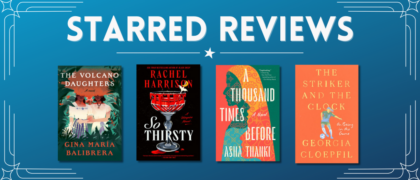Introduction
Steve’s StoryIf your experience with beans started with red kidney beans from a can at a lonely salad bar in a dark, old-school pizzeria, it’s easy to understand your confusion about the recent popularity of beans. I remember—not so fondly—bowls of funky red kidneys, white navys, and mediocre garbanzos waiting to be paired with too-thick slices of cucumber, wilted lettuce, and over-seasoned and yet somehow bland “Italian” dressing.
Until recently, poor old beans hadn’t received a lot of love in the United States. It was thought by many that they were to be reserved for hard times, were hard to digest, required hours of painstaking preparation, and were better suited to old hippies who lived on communes. They certainly weren’t part of the mainstream American diet, and many of us didn’t give them a second thought, except for childish chants and poems about their non-culinary powers.
Things slowly started to change.
Like heirloom tomatoes, mostly forgotten varieties of beans that had thrived under the care of experienced home gardeners started to be grown commercially and were available at a lucky few farmers’ markets. Chefs embraced them and the crowds went along. Home cooks who only knew beans from cans started playing with heirloom and new-crop beans—and instead of being neglected, the beans were starting to be celebrated. It turns out that standard commodity supermarket beans are fine, but as with tomatoes, corn, or just about any vegetable, most modern varieties have been bred for yield and ease of harvesting. These are two important factors, clearly, but what about flavor and texture? For some growers, the goal is to produce as much as possible for the lowest price. Providing a cheap plant-based protein is admirable, but life is rarely an all-or-nothing proposition. Along with the commodity beans, why not explore the history, flavor, and nuance of lesser-known varieties?
I often tell a story about visiting an agriculture exposition at a university where they were able to show off the different breeding programs they were developing. One field had all white beans, another field had perfectly round beans, and yet another had plants that were easier to harvest by machine, and so on. I asked innocently how any of these breeding programs affected the flavor of the beans, and I was met with a blank stare. In five years of field trials, they had yet to cook a single pot of beans to see if the flavor changed, for better or worse.
The contemporary thinking was that it didn’t matter since you’d want to add rich chicken stock or a ham bone or another flavoring ingredient because beans on their own weren’t worth much. It’s similar to the comparison between acorn-fed pork from Spain (which only needs curing to be delicious) and factory-raised pork that is smothered in barbecue sauce, in part to make up for the lack of flavor in the pork. Both are acceptable, but I’m much more interested in quality ingredients and cooking them with minimal fuss to allow their natural flavor to come through.
No longer the bland, chalky kidney beans in that salad bar of long ago, the beans we have available today are gaining cultlike status, and demand for all sizes and colors and shapes continues to grow.
My story with beans starts with me turning forty and almost giving up. I had been an almost-successful serial entrepreneur, and I thought I’d reached the end of the line. I was prepared to get a bad job at a big-box store and start a garden. I’d done a little gardening, and my instincts told me that if I had a garden, things would work out somehow. I was right. I started growing and taking things to the farmers’ market, and I never got around to that bigbox store job. The early internet was especially kind to farmers and gardeners interested in buying and trading seeds, and I’ll never forget the thrill of growing beans and finally tasting a pot of Rio Zapes at the end of the season. The flavor and look was similar to the pintos I liked, but there was something extra. A hint of coffee, or was that chocolate, or both? It didn’t matter. I was hooked. I quickly realized I was a better evangelist than a grower, and now my company, Rancho Gordo, works with several farms on the West Coast, in Mexico, and in Europe to bring in my favorite varieties.
One of my old entrepreneurial efforts was as a web designer, so when people really started shopping for food in earnest over the internet, I was poised and ready. I found I was most comfortable talking to other home cooks via the farmers’ markets or the internet rather than dealing with distributors or big stores, so we kept the business primarily direct-to-consumer, an idea that hadn’t quite taken hold when we started but now is a standard practice.
I was rather lonely when I first sold my beans at the local farmers’ markets. It was the early 2000s, and in general people were kind but also felt sorry for me because I was so passionate about such a “loser” ingredient. But one by one, opinions changed. There were some hard-core bean evangelists who would tell their friends, and their friends became customers, and slowly but surely, there was an audience.
Heirloom beans are seeds that have been preserved for certain characteristics and passed down through generations; when planted, they will produce the same kind of bean every time. I surely wasn’t the first person to understand their worth, but I did feel as if they were my secret and it was my job to share them with the world. There were a few attempts by other companies to commercialize them, but success was limited. And the motivation to share them wasn’t focused on changing our diet. I think the talent it takes to grow beans is completely different from the talent it takes to get others excited. Farmers mostly saw them as a commodity, not the way I did. I remember being in a flowering bean field, leaves and stems waving in the gentle wind, and seeing the number of pots of beans we could provide.
Early on, good chefs were my customers at the farmers’ markets. Thomas Keller of The French Laundry was an immediate fan, and others quickly followed. At the time, most people thought of beans as poor-people food or hippie food, if they thought of them at all. Keller understood that they were a perfect ingredient that had been taken for granted. They were unknown to most, but this secret was about to get out.
Soon enough we had a warehouse and small retail store in Napa. Now I look back on those early and difficult days with fondness. Wednesday was a day off, but Friday morning was the St. Helena farmers’ market, and Friday night there was a great block party in Napa called Chef’s Market. Saturday mornings I started in Calistoga, then made the two-hour trek south to Oakland’s Grand Lake market. Sunday was the market at the Frank Lloyd Wright–designed civic center in San Rafael. Monday was off, but Tuesday was the regular Napa farmers’ market and Thursday was the small Yountville farmers’ market. Each week I covered more than 200 miles!
At each of these markets, I’d lay out an elaborate display of twenty different types of beans in baskets on top of colorful vintage Mexican tablecloths. At first I sold the beans in bulk, but too many people were sticking their hands in the baskets, and it was hard to ask them to stop when they were clearly having so much fun. I switched to closed bags and displayed a bowl of loose beans with a sign that read, “Touching Beans. Go ahead, you know you want to.” A shot of the colorful beans and that sign (with our logo!) was very popular on the photo-sharing website called Flickr, long before Instagram was a thing.
Our sales continued to grow, and we were reaching more stores. We have never hired a publicist, but reporters still came. Writers and reporters liked discovering us on their own rather than through press releases.
The Washington Post was the first big one.
Food & Wine did a terrific article pairing us with San Francisco chef Laurence Jossel of Nopa. We were featured in
Gourmet magazine, the
Los Angeles Times, and maybe my favorite, a twelvepage article in
The New Yorker. Each article added another level of awareness for the beans and allowed us to grow naturally.
I don’t want to overstate our importance in the long history of beans, but I will say that I’m glad we found each other. It’s been a great, happy relationship.
Copyright © 2024 by Steve Sando with Julia Newberry. All rights reserved. No part of this excerpt may be reproduced or reprinted without permission in writing from the publisher.

























